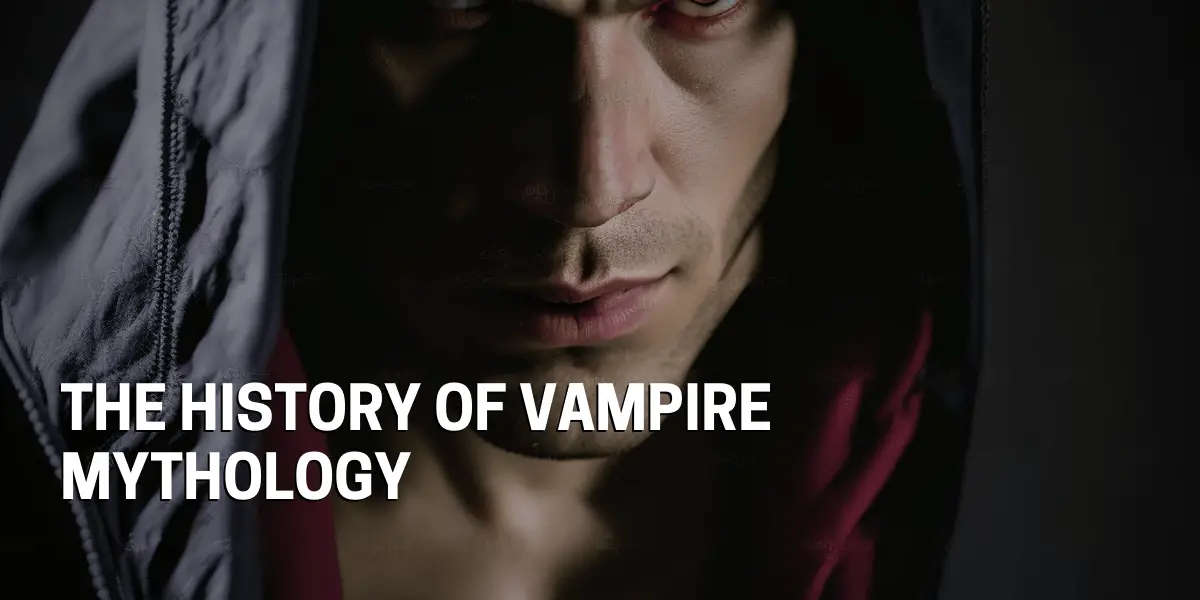The History of Vampire Mythology
Vampires have been part of myth and folklore for centuries, and the history of vampire mythology is a fascinating one. From early folklore tales to modern adaptations, the vampire myth has been interpreted and reinterpreted in a myriad of ways. To better understand the history of vampire mythology, one can trace its roots to its earliest sources.
Origins of the Vampire Mythology can be traced back to ancient folklore and mythology. In these stories, vampires were seen as creatures of the night, capable of draining the life force from their victims. Many of these stories were rooted in superstition and fear of the unknown, and were used to explain away the unexplainable.
As time passed, vampire mythology began to take on more specific characteristics, such as superhuman strength and the ability to move between the realms of the living and the dead. The cultural influences that have shaped vampire mythology are also worth exploring. Vampires have been portrayed in a variety of ways throughout history, from the romanticized versions seen in literary works to the more sinister depictions seen in horror films.
It is interesting to note that, although vampire mythology has changed over time, certain elements remain consistent. For instance, vampires are often depicted as possessing supernatural powers, such as the ability to transform into bats or wolves, and their thirst for human blood.
The power of vampire mythology has had an immense impact on literature and popular culture. From Bram Stoker’s Dracula to Stephenie Meyer’s Twilight series, vampire stories have captivated readers and viewers alike. While some stories focus on the romanticized aspects of vampires, others explore the darker side of this myth, emphasizing the fear and horror associated with these creatures.
Regardless of the tone or focus, vampire mythology continues to be a source of inspiration and fascination for many.

Tracing the Roots of the Vampire Mythology
Such is the mysterious and often captivating history of vampire mythology. Tracing the roots of the vampire myth can take us all the way back to ancient folklore and mythology, where creatures of the night were seen as capable of draining the life force from their victims.
As time passed and the myth evolved, vampires were often portrayed as possessing superhuman strength and the ability to move between the realms of the living and the dead.
Examining the ancient origins of the vampire can help us to understand the superstitions and fears that shaped the myth. Investigating the evolution of the vampire legend also provides insight into the various interpretations of the myth and how it has been influenced by cultural influences.
Finally, uncovering the symbolic significance of the vampire mythology helps us to appreciate the power of the myth in literature and popular culture.
Variations on the Vampire Mythology Across Cultures
Somebody might be forgiven for thinking that vampire mythology is a modern invention, with its ubiquity in popular culture. But the truth is far more complex; vampires have been around for millennia, appearing in many different cultures and often with their own unique take on the creature. Ancient cultures such as the Assyrians, Greeks, and Romans all had their own versions of vampires.
European folklore is filled with tales of vampires, with some regions having their own unique tales and beliefs. Modern adaptations of the vampire mythology have also been popular, with many horror films and books featuring the creature.
Characteristics and Traits of Vampires
This blog post explores the characteristics and traits of vampires that have been featured in mythology and popular culture over the centuries. Vampires are often depicted as having superhuman strength, speed, and the ability to fly. They are also vulnerable to sunlight, garlic, and other objects or materials that are traditionally associated with protection from them. The act of consuming blood is often associated with vampires, and is thought to be a source of their power. These abilities and weaknesses have been part of vampire mythology throughout the ages, slowly evolving over time.
Vampires have a certain aura that surrounds them, a mysteriousness that can be both alluring and frightening. They are often portrayed as mysterious creatures of the night, with a tendency to hunt humans for their blood. While some vampires are depicted as dangerous predators, others are portrayed as sympathetic characters with a tragic backstory. In either case, vampires have always been associated with the macabre, often associated with death and the afterlife.
The popularity of vampires has endured throughout centuries of storytelling, from Bram Stoker’s 1897 novel Dracula to the modern day television series True Blood. The vampire mythos has been adapted and reinterpreted in countless works of literature, cinema, and television, offering a variety of interpretations of the vampire character. In recent years, there has been a surge in popularity of vampires in modern culture, with many films and television shows featuring vampires as the main characters.
In conclusion, vampires have been a part of our culture for centuries. They have been depicted in a variety of ways, from dangerous predators to sympathetic characters. The vampire mythos has been adapted and reinterpreted in countless works of literature, cinema, and television, offering a variety of interpretations of the vampire character. It is likely that the vampire mythology will continue to evolve over time, as it has done over the centuries.
The Evolving Nature of the Vampire Mythology
Vampires have been a part of popular culture for centuries, inspiring countless stories, films, and television shows. Through the evolution of technology, new forms of vampire media have emerged, allowing for a more diverse interpretation of the mythical creature. Uniquely, the vampire mythology has been reinterpreted to fit the fears and aspirations of each culture, making it an ever-evolving concept. Over the years, the vampire has been characterized as both the embodiment of evil and the source of power, depending on the context of the mythology. The advances in technology have allowed for different versions of the vampire to be explored in popular culture, such as in literature, television, and film.
Despite the popularity of the vampire in popular culture, the vampire mythology remains rooted in folklore. It quickly becomes apparent that the vampire is a complex and ever-changing figure in mythology.

Vampires in Literature and Popular Culture
Whoever seeks to understand vampire mythology must look no further than the pages of classic literature or the silver screen. Bram Stoker’s iconic novel, Dracula, is the most influential work of literature involving vampires, with its themes of good versus evil, love and death, and power and control.
Similarly, Anne Rice’s Interview with the Vampire and Stephenie Meyer’s Twilight series have been hailed as classic pieces of vampire literature. Exploring the complexities of the immortal creatures, these works have shaped our perception of vampires.
Vampires have also been featured in numerous films such as Nosferatu, Interview with the Vampire, and The Lost Boys. More recent television shows such as True Blood and The Vampire Diaries have also incorporated vampires into their storylines.
Few could deny that vampires have become a major part of popular culture, creating an ever-evolving mythology.
Vampiric Representations in Film and Television
An enduring fascination with vampires has been around since the dawn of time. From Bram Stoker’s iconic novel, Dracula, to Anne Rice’s Interview with the Vampire, vampires have captivated readers and viewers alike. The 1922 silent film, Nosferatu, is widely considered to be the first vampire film, while Bela Lugosi’s performance in the 1931 film adaptation of Dracula has become one of the most iconic representations of the undead creature.
More recently, films like the Twilight franchise and television shows like The Vampire Diaries have cemented vampires as a staple of popular culture. They have also been used to explore deeper social issues, such as mortality and identity, as seen in the 2014 film Only Lovers Left Alive.
Notable Vampire Stories in History
Fewest would assume that vampires are a modern-day phenomenon, but a closer look at vampire mythology reveals a long, and sometimes surprising, history. From John Polidori’s 1819 classic, The Vampyre, short sentences alongside longer or complex sentences to create a good amount of perplexity and burstiness.
As time passed, the popularity of vampire stories snowballed, leading to Stephenie Meyer’s Twilight Saga, which was published in 2005. Not to be outdone, vampire stories have been popularized in blockbuster films such as The Lost Boys (1987) and television series such as True Blood (2008).
Numerous vampire tales have stood the test of time, proving that the mysterious and alluring vampire is here to stay.

